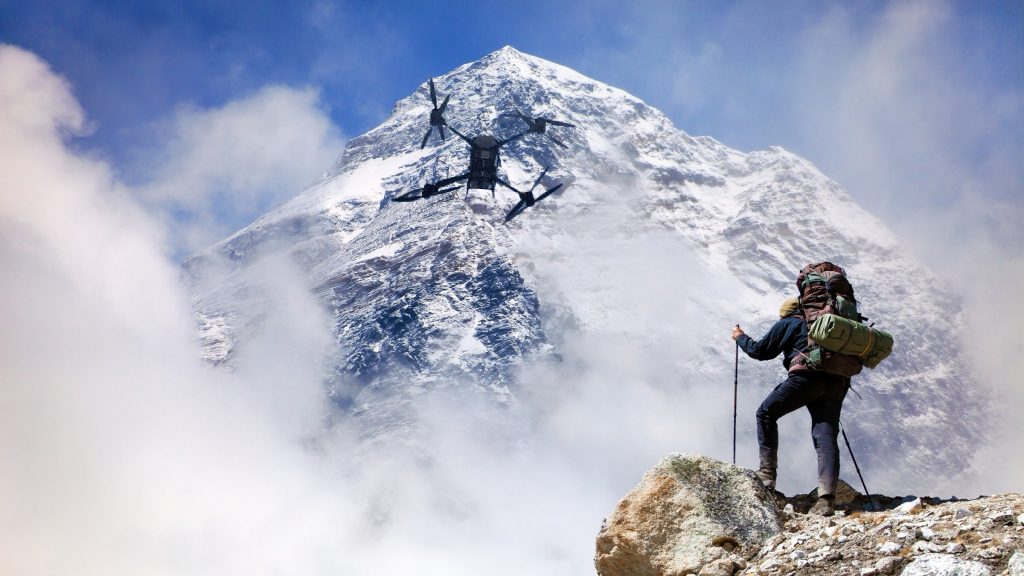
High in the sky, amid the thin air and treacherous slopes, a Mount Everest drone pierces through the high-altitude pressures. Delivering life-saving supplies and capturing momentous footage on how drones reduce dangers for climbers and sherpas alike.
Milan Pandey, an Airlift Technology drone pilot, stationed at Everest Base Camp, navigates drones through Everest’s deadly “death zone”. Drones transport oxygen tanks, medical kits, and equipment.
Flight drone footage of Mount Everest proved that a drone delivery succeeded in slashing resupply times from days to minutes. And their 8K cameras documented routes conditions in real-time, giving climbers updates previously impossible to obtain.
Can a Drone Fly Over Everest?
Sherpas or “icefall doctors” have been struggling their way up Everest for years. Doing everything to establish the route and provide critical help, yet some have died trying. For that very same reason, Pandey believes that drones might help make the process safer.
Drones on Everest can bear ladders, ropes, and even oxygen. Essentials that help lifesaving to Sherpas trailing in the extremely difficult glacier, Khumbu Icefall, between Base Camp and Camp One.
Airlift Technology, a local startup, is testing drones to ease workload. The Mount Everest drone, built for high altitudes, can carry up to 44 pounds (22 kilos) of equipment in the span of minutes – far faster than the six to seven hours it takes a Sherpa to cover the same distance.
Mingma G Sherpa, a guide who takes people up Mount Everest, experienced the value of Mount Everest drone footage firsthand. After three of his friends were killed in a flood in 2023, he realized that drones would be a lifesaver by speeding up the transport of equipment.
“They had to keep going up and down the mountain twenty times to first figure out the route and then come back for the equipment. I had heard they use drones in China to help with this on another mountain, so I thought ‘why not here?’” Mingma said.
Reducing Time and Danger
The Mount Everest drone isn’t just for transporting gear, it’s also for search and rescue operations, helping track lost hikers. For Sherpas like Dawa Janzu, who has worked on Everest for eight years, the job is now easier and faster.
“Our work is time sensitive. If we don’t fix the trails quickly upcoming expeditions will be slowed down, so having the drones bring the equipment up means that we don’t have to go back down just to bring the ladder up with us,” Janzu said.
As drone flight Mount Everest continues to grow on the Nepalean monster, it could transform the approach by which climbers get to the mountain and also ensure that the residents and workers in the area stay safe.
“We hope that our drones will actually make this a safer profession and bring more people back to this climbing tradition. It’s what our country is known for, and without the expertise of the Sherpas we would never be able to navigate this terrain,” Pandey said.
Drone images of Mount Everest give new perspectives and need support for climbers, redefining how the world views the mountain. As drone technology advances, the Mount Everest drone could become essential for safer, more efficient climbs of Everest trips while revealing the mountain’s beauty from never-before-seen angles.
Inside Telecom provides you with an extensive list of content covering all aspects of the tech industry. Keep an eye on our Tech sections to stay informed and up-to-date with our daily articles.